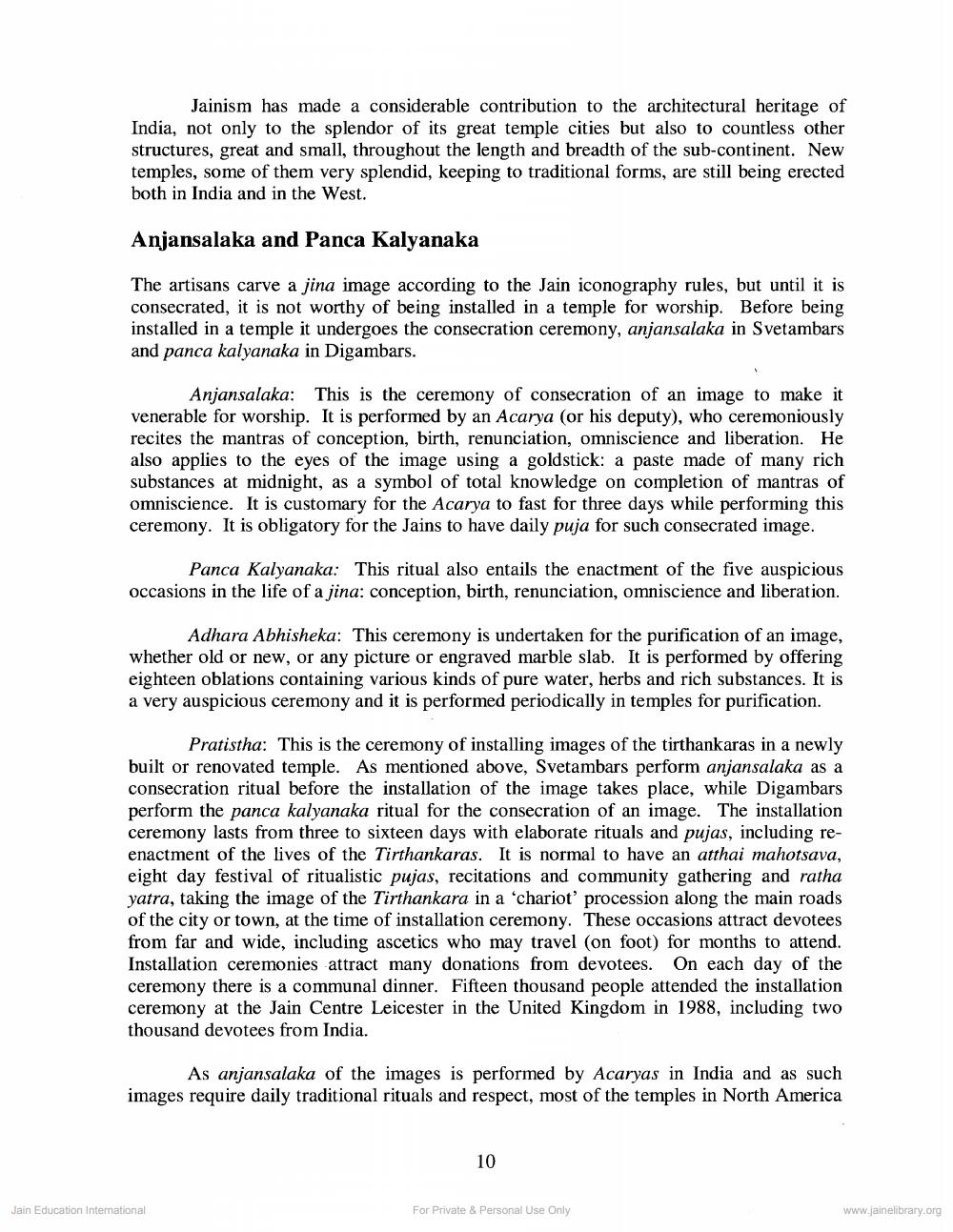________________
Jainism has made a considerable contribution to the architectural heritage of India, not only to the splendor of its great temple cities but also to countless other structures, great and small, throughout the length and breadth of the sub-continent. New temples, some of them very splendid, keeping to traditional forms, are still being erected both in India and in the West.
Anjansalaka and Panca Kalyanaka
The artisans carve a jina image according to the Jain iconography rules, but until it is consecrated, it is not worthy of being installed in a temple for worship. Before being installed in a temple it undergoes the consecration ceremony, anjansalaka in Svetambars and panca kalyanaka in Digambars.
Anjansalaka: This is the ceremony of consecration of an image to make it venerable for worship. It is performed by an Acarya (or his deputy), who ceremoniously recites the mantras of conception, birth, renunciation, omniscience and liberation. He also applies to the eyes of the image using a goldstick: a paste made of many rich substances at midnight, as a symbol of total knowledge on completion of mantras of omniscience. It is customary for the Acarya to fast for three days while performing this ceremony. It is obligatory for the Jains to have daily puja for such consecrated image.
Panca Kalyanaka: This ritual also entails the enactment of the five auspicious occasions in the life of a jina: conception, birth, renunciation, omniscience and liberation.
Adhara Abhisheka: This ceremony is undertaken for the purification of an image, whether old or new, or any picture or engraved marble slab. It is performed by offering eighteen oblations containing various kinds of pure water, herbs and rich substances. It is a very auspicious ceremony and it is performed periodically in temples for purification.
Pratistha: This is the ceremony of installing images of the tirthankaras in a newly built or renovated temple. As mentioned above, Svetambars perform anjansalaka as a consecration ritual before the installation of the image takes place, while Digambars perform the panca kalyanaka ritual for the consecration of an image. The installation ceremony lasts from three to sixteen days with elaborate rituals and pujas, including reenactment of the lives of the Tirthankaras. It is normal to have an atthai mahotsava, eight day festival of ritualistic pujas, recitations and community gathering and ratha yarra, taking the image of the Tirthankara in a 'chariot' procession along the main roads. of the city or town, at the time of installation ceremony. These occasions attract devotees from far and wide, including ascetics who may travel (on foot) for months to attend. Installation ceremonies attract many donations from devotees. On each day of the ceremony there is a communal dinner. Fifteen thousand people attended the installation ceremony at the Jain Centre Leicester in the United Kingdom in 1988, including two thousand devotees from India.
As anjansalaka of the images is performed by Acaryas in India and as such images require daily traditional rituals and respect, most of the temples in North America
Jain Education International
10
For Private & Personal Use Only
www.jainelibrary.org




